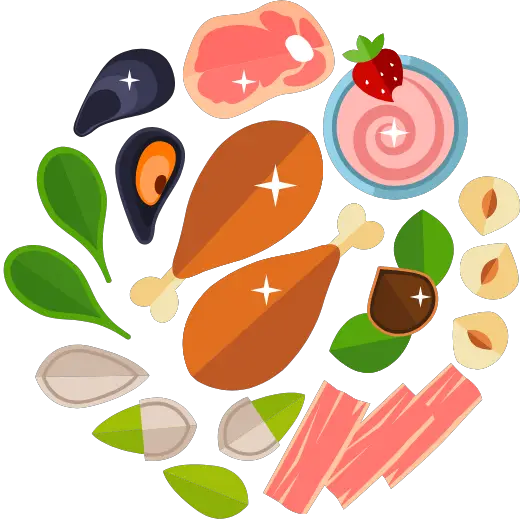In the heart of autumn, as the world turns its focus to remembrance, Mexico comes alive in a vibrant explosion of color, music, and flavor. This is for Día de los Muertos, the Day of the Dead. Far from being a somber or morbid occasion, this unique holiday is a joyous and profound celebration of life and a tribute to the enduring bonds of family. At the very center of this celebration is food—not just for the living to enjoy, but as a sacred offering and a heartfelt invitation to the spirits of the departed.
The culinary traditions of Día de los Muertos are a beautiful expression of love, memory, and hospitality. They form a bridge between the worlds of the living and the dead, ensuring that those who have passed are never forgotten. We invite you to explore the symbolic and delicious foods that make this one of the most meaningful culinary events in the world.
1. The Ofrenda: A Banquet for the Spirits
The focal point of any Día de los Muertos celebration is the ofrenda, a multi-tiered altar built in homes and cemeteries. This is not an altar for worship, but rather a personal and lovingly constructed welcome mat for the souls of deceased family members, who are believed to return for a brief visit. Every item on the ofrenda is rich with symbolism, and food plays a starring role.
The offerings are designed to appeal to the senses of the spirits and provide them with nourishment after their long journey. Families prepare the favorite dishes and drinks of their departed loved ones, arranging them carefully on the altar. A glass of water is always included to quench the spirit’s thirst, while salt is offered as a purifying element. The fragrant smoke of copal incense (representing fire) and the fluttering of papel picado (intricately cut paper banners, representing wind) complete the sensory welcome. The food itself, representing the element of earth, is the ultimate gesture of hospitality.
2. Pan de Muerto: The Bread of the Dead
Perhaps the most iconic food of the season is Pan de Muerto, or “Bread of the Dead.” This sweet, brioche-like bread is an essential element of the ofrenda and is eagerly consumed by the living throughout October and early November. Its shape and decoration are deeply symbolic.
Typically, the bread is formed into a round loaf, representing the circle of life. Atop the loaf are placed strips of dough shaped to look like bones and a small ball in the center representing a skull or a teardrop. The arrangement of these “bones” often points in four directions, symbolizing the four corners of the universe or the four cardinal directions, guiding the spirits home. The bread is often flavored with anise seed or orange blossom water, giving it a distinctive, fragrant aroma meant to entice the souls. While this classic form is most common, regional variations abound, with some bakers shaping the bread into human or animal figures.
3. Calaveras de Azúcar: The Sweetness of Memory
Another unmissable sight during Día de los Muertos is the calavera de azúcar, or sugar skull. These brightly decorated skulls, crafted from granulated sugar, are whimsical, artistic, and anything but frightening. They embody the Mexican view of death as a natural part of the human experience, not something to be feared.
The skulls are often decorated with colorful icing, sequins, and foil, and it is a common practice to have the name of a departed loved one written across the forehead. They are placed on the ofrenda as a sweet treat for the visiting spirits. For the living, especially children, they serve as a tangible and even playful reminder that the memory of their ancestors is a sweet one. Alongside sugar skulls, you will often find other special candies, such as coffins with pop-up skeletons and amaranth seed skulls, as well as candied pumpkin (calabaza en tacha), a traditional autumn sweet.
4. A Feast of Favorites: Savory Dishes and Traditional Drinks
While Pan de Muerto and sugar skulls are the most famous symbols, the heart of the ofrenda’s feast lies in the savory dishes that families painstakingly prepare. The goal is to cook the specific meals and serve the particular drinks that their deceased relatives enjoyed most in life. This act of cooking is an act of remembrance, a way to honor the unique personality and tastes of each individual.
Common dishes prepared for the celebration include:
- Mole: This famously complex and rich sauce, which can contain dozens of ingredients like chilies, nuts, seeds, and chocolate, is often reserved for special occasions. A pot of mole, typically served over turkey or chicken, is a truly special offering.
- Tamales: A quintessential Mesoamerican food, tamales are made from masa (corn dough) filled with meat, cheese, or chilies, wrapped in a corn husk, and steamed. They are a labor-intensive food, often made in large batches by the whole family, making them a perfect food for celebration and sharing.
- Pozole: A hearty and ancient stew made with hominy (nixtamalized corn kernels) and pork or chicken, simmered in a flavorful broth and served with a variety of garnishes.
- Beverages: To complete the feast, families offer the spirits their favorite drinks. This can range from a warm, comforting mug of atole (a masa-based drink) or hot chocolate for a child, to a bottle of beer or a small glass of tequila, mezcal, or pulque for an adult.
The food of Día de los Muertos is a profound and beautiful dialogue between the past and the present. It is a culinary tradition steeped in history, symbolism, and above all, love. Through the careful preparation and offering of these dishes, families ensure that their loved ones are not gone, but are welcomed back each year with honor, joy, and a place at the table.
